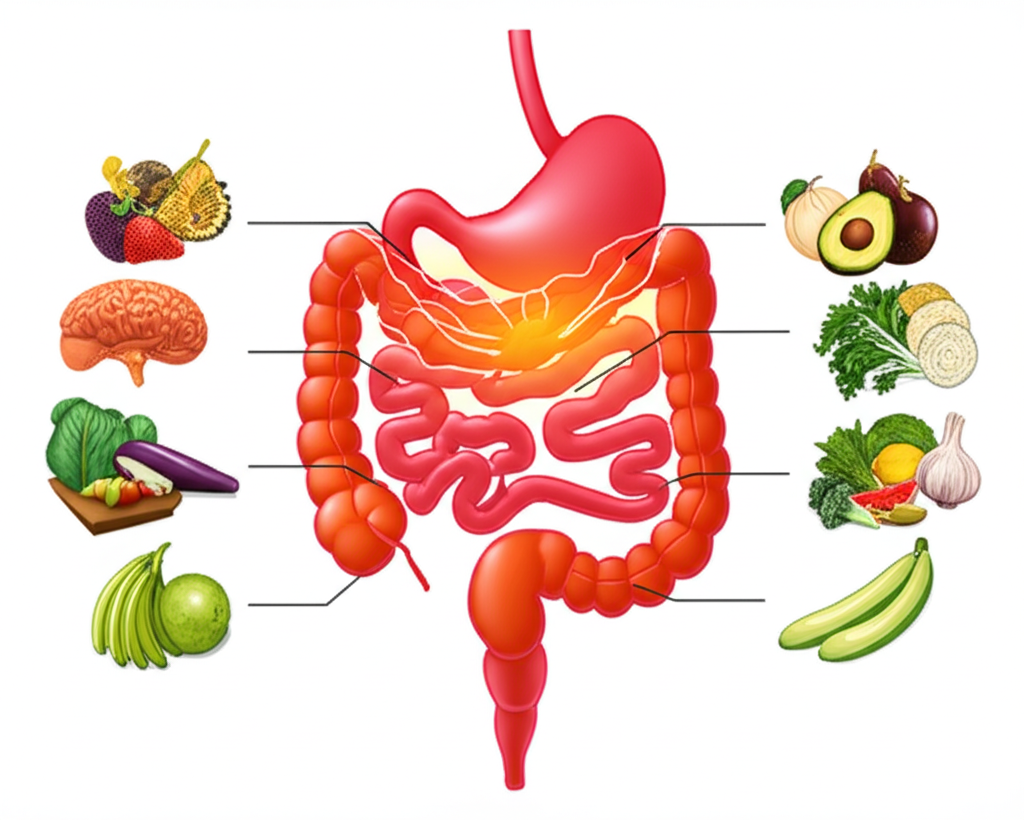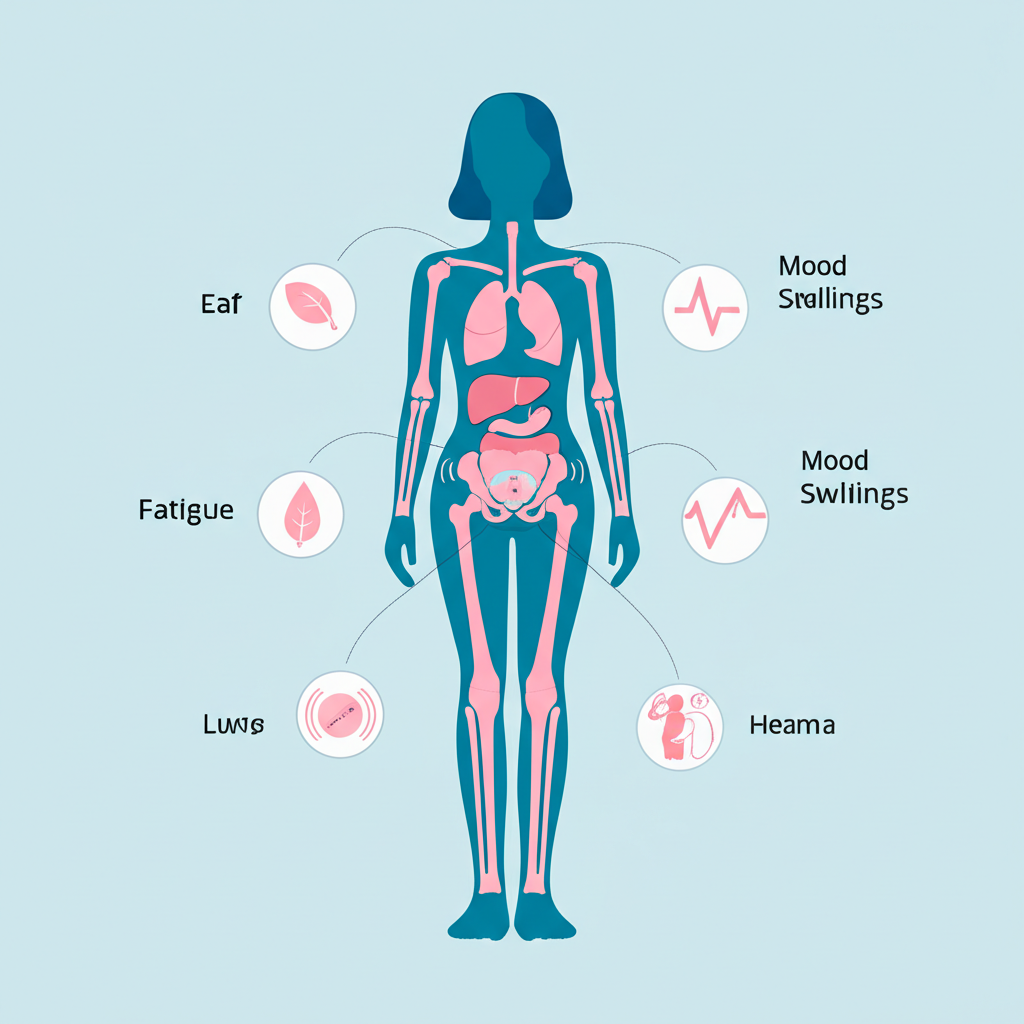
Understanding PMS: A Comprehensive Guide
A comprehensive, evidence-based guide to understanding and naturally managing PMS symptoms through nutrition, lifestyle changes, and targeted strategies for hormonal balance.

# Understanding PMS: A Comprehensive Guide to Hormonal Wellness
Premenstrual syndrome (PMS) affects up to 85% of women worldwide, yet many still struggle to understand and manage their symptoms effectively. As a wellness writer specializing in women's health, I've spent years researching evidence-based approaches to hormonal balance and PMS management.
## What Exactly is PMS?
PMS encompasses a wide range of physical, emotional, and behavioral symptoms that occur in the luteal phase of your menstrual cycle - typically 1-2 weeks before your period begins. These symptoms can significantly impact your quality of life, relationships, and work performance.
### Common PMS Symptoms Include:
**Physical Symptoms:**
- Bloating and water retention
- Breast tenderness and swelling
- Headaches and migraines
- Fatigue and low energy
- Food cravings (especially for sugar and carbs)
- Joint and muscle pain
- Acne breakouts
**Emotional and Mental Symptoms:**
- Mood swings and irritability
- Anxiety and depression
- Difficulty concentrating
- Sleep disturbances
- Increased sensitivity to stress
## The Science Behind PMS
Recent research has revealed that PMS isn't just "in your head" - it's a complex interplay of hormonal fluctuations, neurotransmitter changes, and individual sensitivity to these variations.
### Key Hormonal Players:
1. **Estrogen and Progesterone**: The dramatic drop in these hormones before menstruation triggers many PMS symptoms
2. **Serotonin**: Often called the "happy hormone," serotonin levels can plummet during the luteal phase
3. **GABA**: This calming neurotransmitter can become imbalanced, leading to anxiety and mood issues
4. **Cortisol**: Chronic stress can worsen PMS symptoms by disrupting your entire hormonal cascade
## Natural Management Strategies That Actually Work
### 1. Nutrition for Hormonal Balance
**Foods to Emphasize:**
- **Complex carbohydrates**: Quinoa, sweet potatoes, and oats help stabilize blood sugar and support serotonin production
- **Magnesium-rich foods**: Dark leafy greens, nuts, and seeds can reduce cramping and mood swings
- **Omega-3 fatty acids**: Fatty fish, walnuts, and flaxseeds help reduce inflammation
- **B-vitamins**: Whole grains and legumes support nervous system function
**Foods to Limit:**
- Refined sugars and processed foods
- Excessive caffeine (can worsen anxiety and breast tenderness)
- High-sodium foods (increase bloating)
- Alcohol (disrupts sleep and hormone metabolism)
### 2. Targeted Supplementation
Based on current research, these supplements show promise for PMS relief:
- **Magnesium Glycinate**: 200-400mg daily can reduce cramping and mood symptoms
- **Vitamin B6**: 50-100mg daily may help with mood regulation
- **Omega-3s**: 1-2g daily of EPA/DHA for anti-inflammatory effects
- **Chasteberry (Vitex)**: May help balance progesterone levels
- **Evening Primrose Oil**: Can reduce breast tenderness
*Always consult with a healthcare provider before starting new supplements.*
### 3. Lifestyle Modifications
**Exercise for PMS Relief:**
- Regular moderate exercise can reduce PMS symptoms by up to 50%
- Yoga and stretching help with cramping and stress
- Strength training supports healthy hormone metabolism
- Even 20-30 minutes of daily walking makes a difference
**Stress Management:**
- Chronic stress worsens PMS symptoms significantly
- Practice meditation, deep breathing, or mindfulness
- Prioritize 7-9 hours of quality sleep
- Consider therapy or counseling for emotional support
### 4. Cycle Tracking and Awareness
Understanding your unique pattern is crucial for effective PMS management:
- Track symptoms for at least 3 months to identify patterns
- Note which strategies work best for your specific symptoms
- Use apps like Clue, Flo, or simple calendar tracking
- Share your tracking data with healthcare providers
## When to Seek Professional Help
While mild PMS is normal, severe symptoms that interfere with daily life may indicate:
- **PMDD (Premenstrual Dysphoric Disorder)**: A severe form affecting 3-8% of women
- **Underlying hormonal imbalances**: Thyroid issues, PCOS, or other conditions
- **Mental health concerns**: Depression or anxiety that worsen with your cycle
### Red Flags to Watch For:
- Symptoms that don't improve with lifestyle changes
- Severe depression or suicidal thoughts
- Symptoms that occur throughout your cycle, not just before periods
- Significant impact on work, relationships, or daily functioning
## Creating Your Personal PMS Management Plan
Every woman's experience with PMS is unique. Here's how to create a personalized approach:
1. **Start with tracking**: Document symptoms, triggers, and what helps
2. **Implement one change at a time**: Don't overwhelm yourself with multiple changes
3. **Give strategies time**: Most natural approaches take 2-3 cycles to show full effects
4. **Work with professionals**: Consider working with a functional medicine doctor, nutritionist, or therapist
5. **Be patient with yourself**: Healing takes time, and some months will be better than others
## The Bottom Line
PMS doesn't have to control your life. With the right combination of nutrition, lifestyle changes, and professional support when needed, you can significantly reduce your symptoms and reclaim your monthly cycle.
Remember, you know your body best. Trust your instincts, advocate for yourself, and don't settle for "it's just part of being a woman" as an answer to debilitating symptoms.
---
*Ready to take control of your hormonal health? Subscribe to my newsletter for evidence-based wellness tips delivered straight to your inbox, and download my free PMS tracking template to start your journey toward better cycle health today.*
"The most sustainable morning routine is the one that honors your natural rhythms, not the one that looks perfect on social media."
The Gentle Approach to Morning Routines
Instead of trying to cram everything into the first hour of your day, what if you chose just one or two things that truly serve you? Here's how to build a morning routine that feels nourishing, not overwhelming:
1. Start with Your Non-Negotiables
What are the absolute essentials that help you feel grounded? For me, it's five minutes of deep breathing and a cup of herbal tea. That's it. Some days I add journaling or gentle movement, but those two things are my foundation.
"Instead of trying to cram everything into the first hour of your day, what if you chose just one or two things that truly serve you?"
2. Honor Your Chronotype
If you're naturally a night owl, forcing yourself to wake up at 5 AM might do more harm than good. Research by Dr. Michael Breus shows that working with your natural sleep-wake cycle, rather than against it, leads to better energy and mood throughout the day.
Tweet This:
"The most sustainable morning routine is the one that honors your natural rhythms, not the one that looks perfect on social media."
3. Focus on How You Want to Feel
Instead of focusing on what you should do, ask yourself: How do I want to feel as I start my day? Calm? Energized? Grounded? Then choose activities that cultivate those feelings.
Remember, the goal isn't to have the most impressive morning routine. The goal is to start your day in a way that supports your wellbeing and sets you up for success—whatever that looks like for you.

About Pratima Khatri
Pratima is a digital creator and content strategist specializing in women's health, nutrition & wellness, lifestyle habits, and writing & blogging. She helps women navigate their wellness journey through gentle guidance and evidence-based insights, creating content that connects and stories that inspire bold living.
